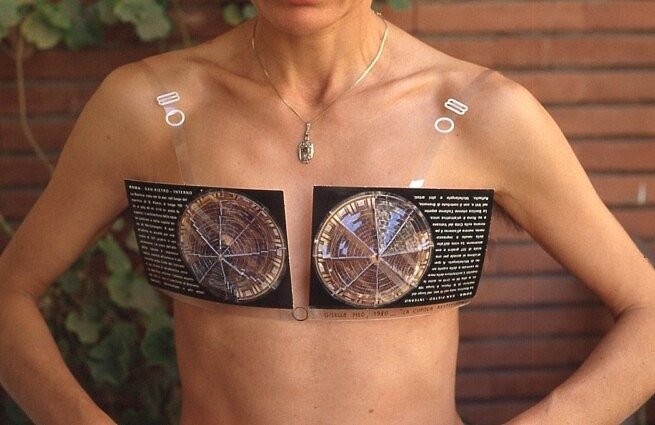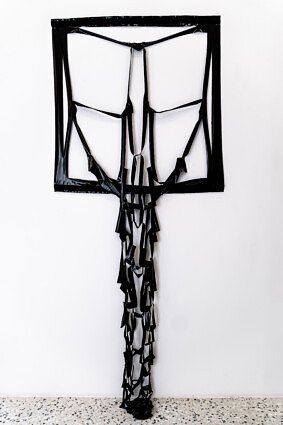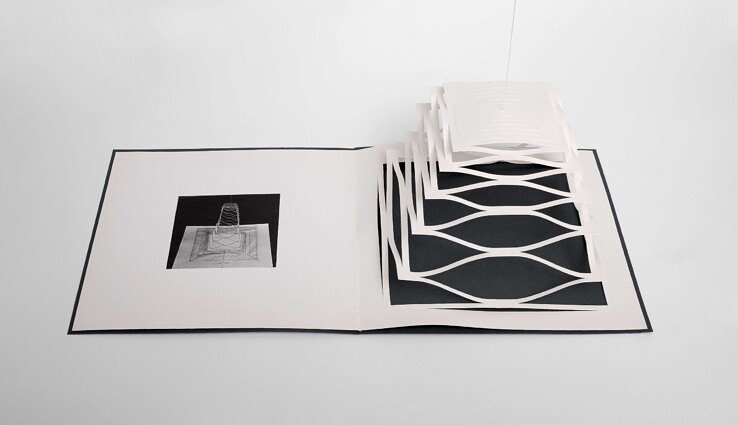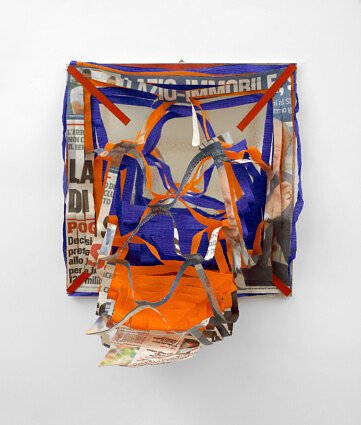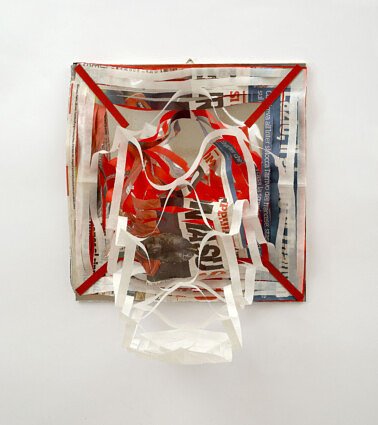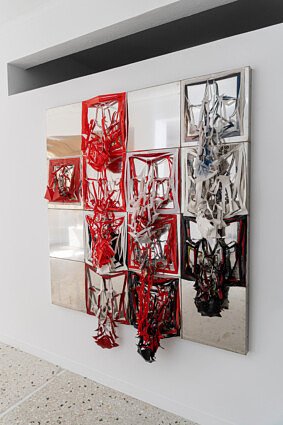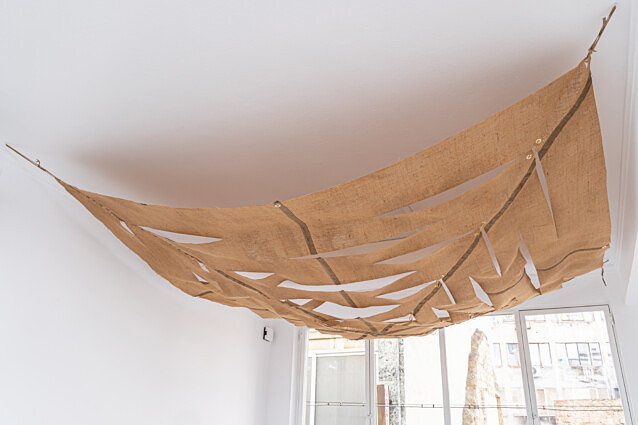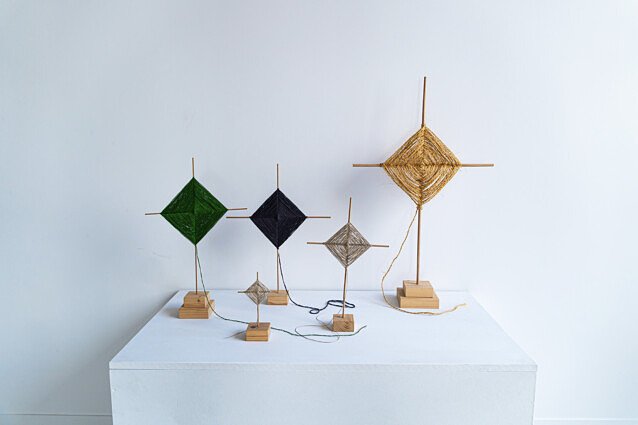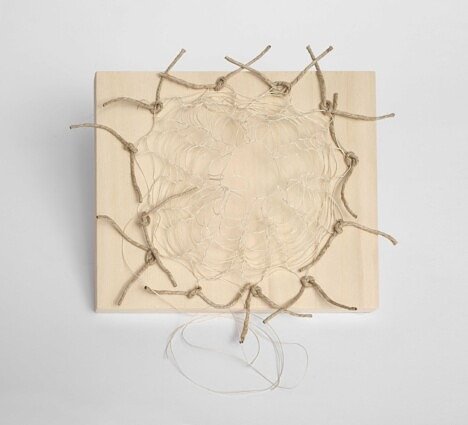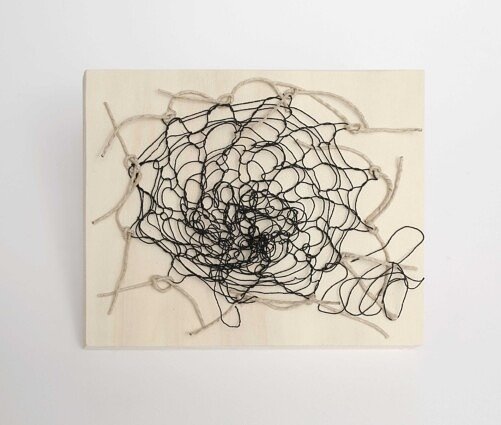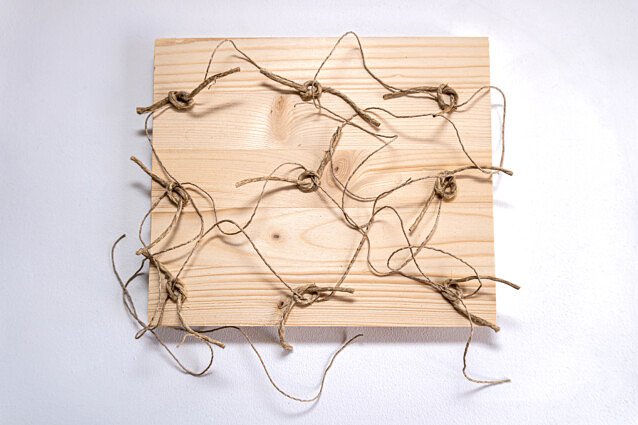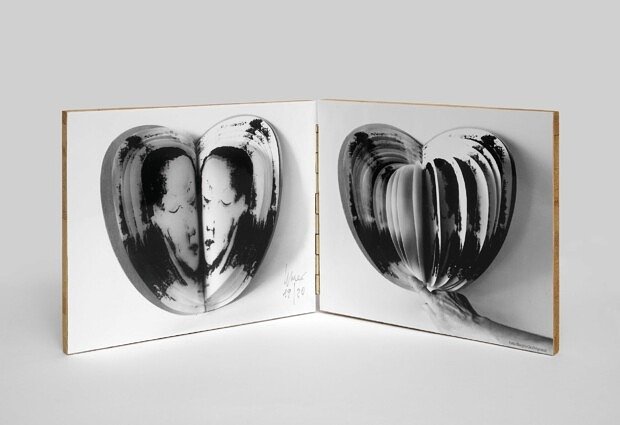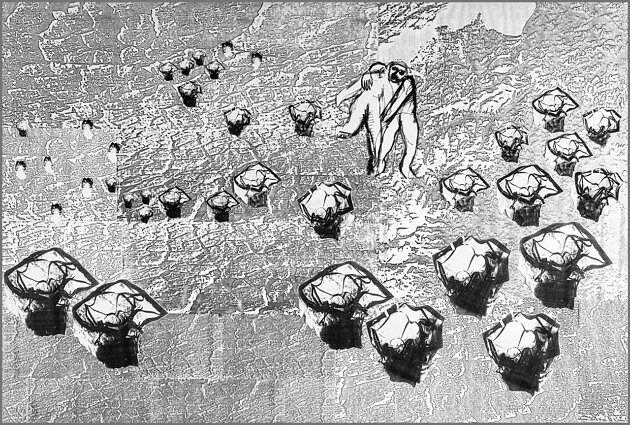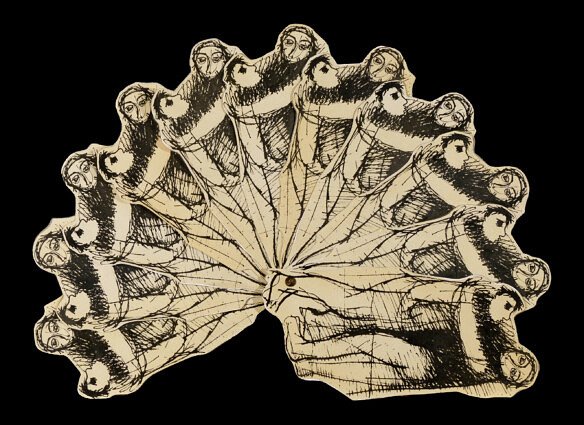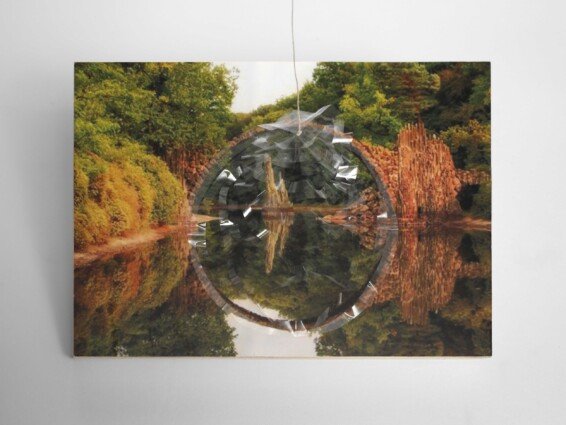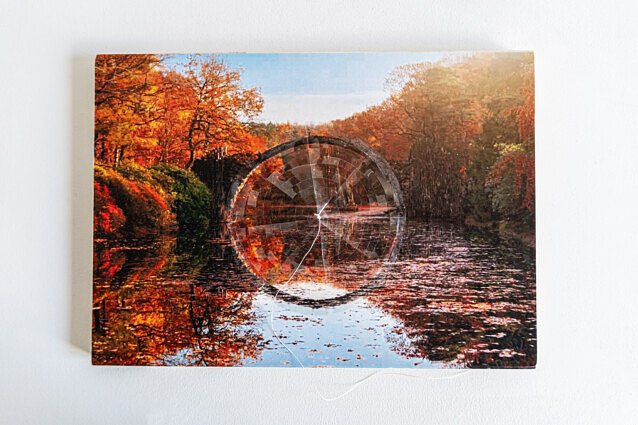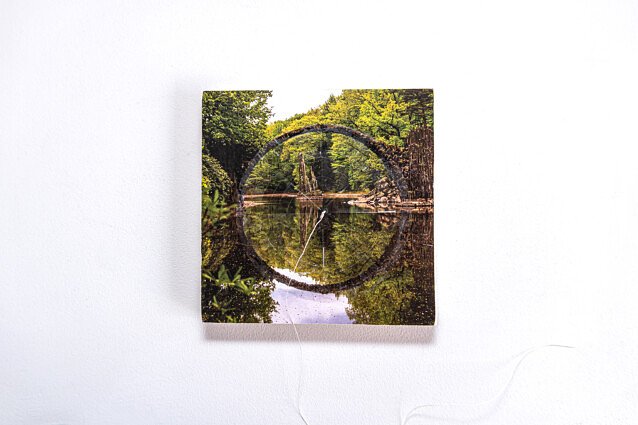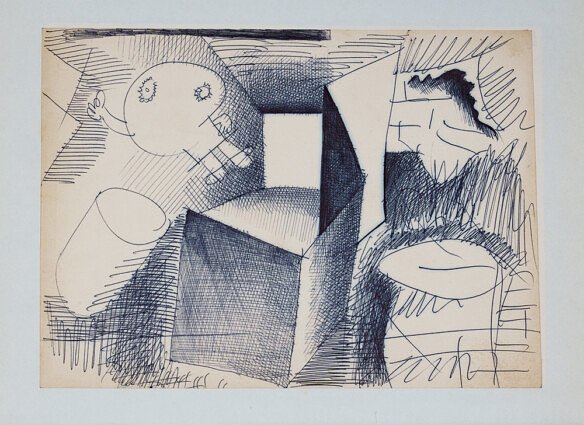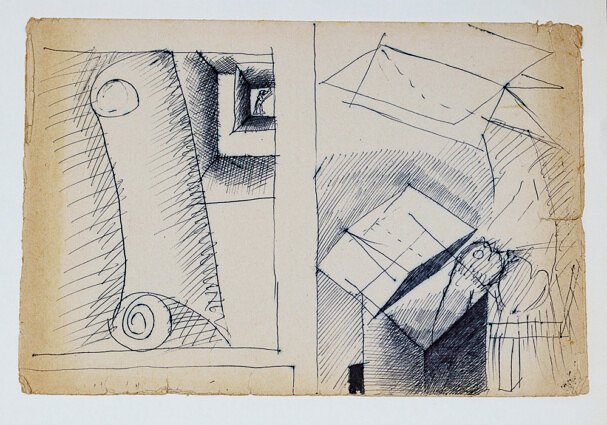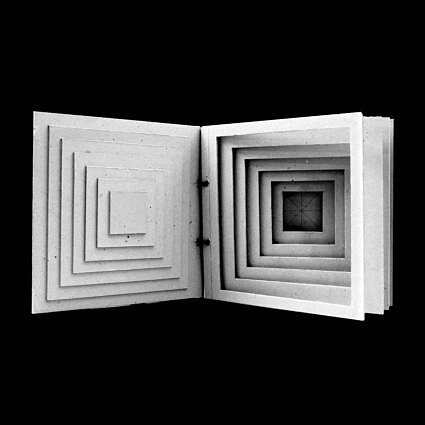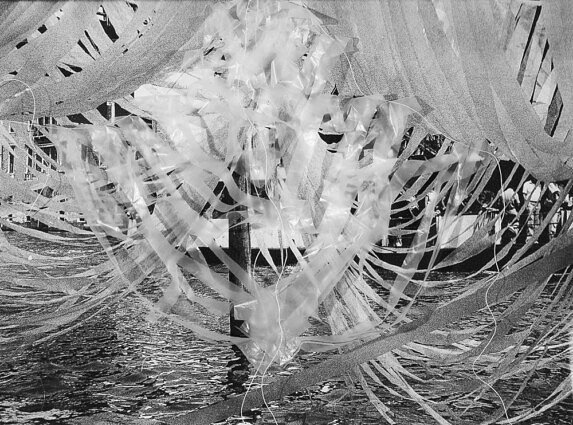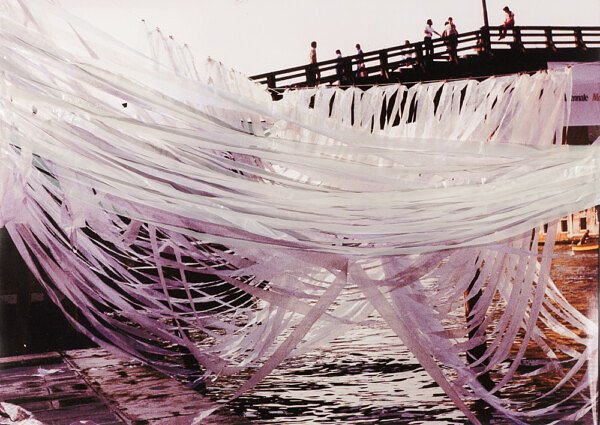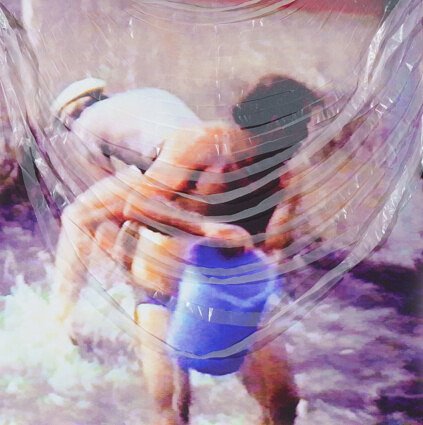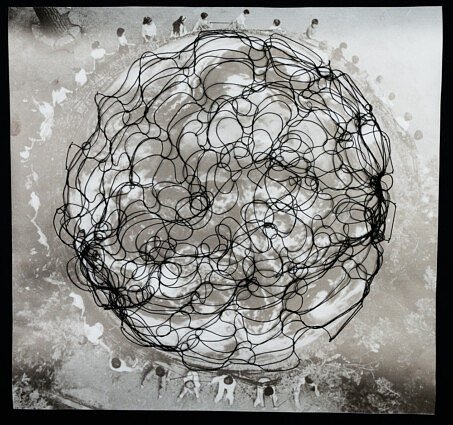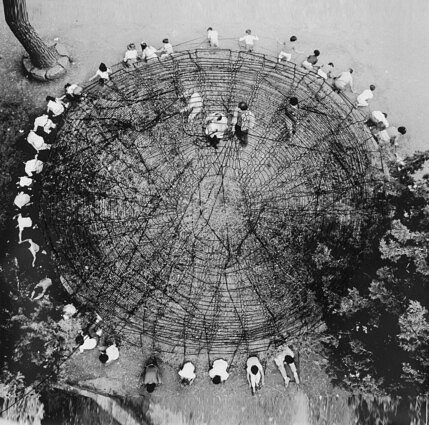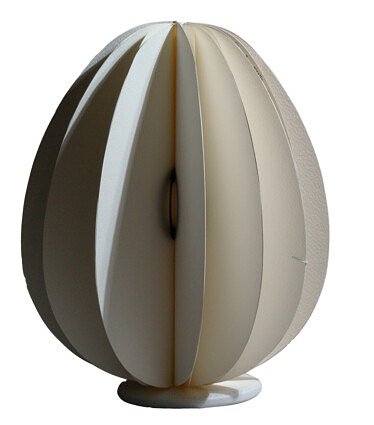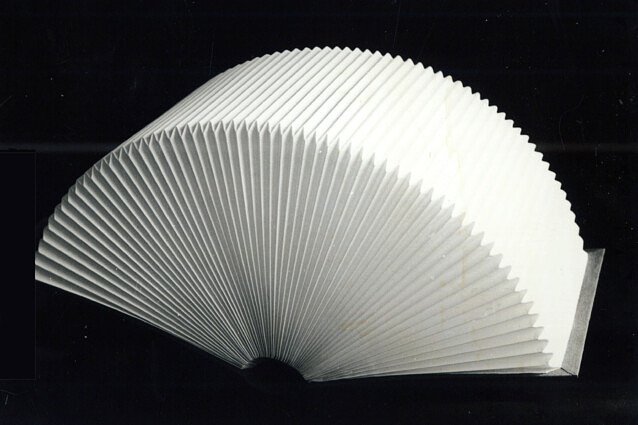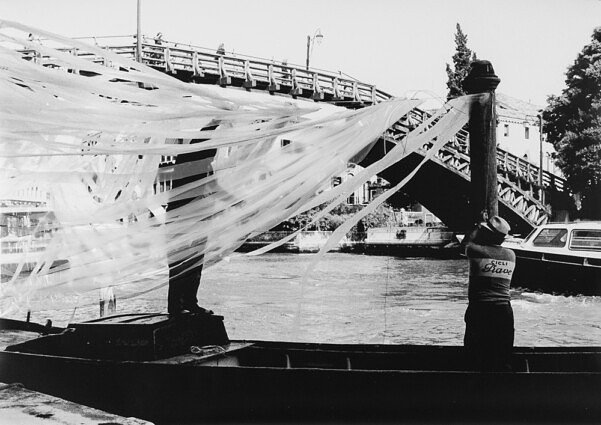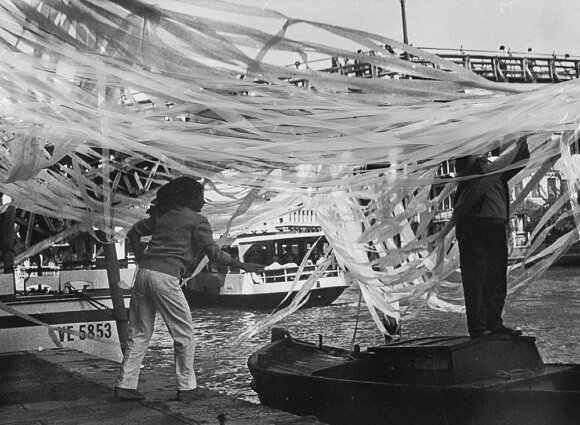Gisella
Meo
Biography
Gisella Meo was born in Treviso in 1936. She studied at the Academy of Fine Arts in Venice where she met Tancredi with whom she has a relationship that will later influence her work. In the 60s she lived in Africa and made her debut with multi-material and informal works. In 1976 at the Galleria Numero di Fiamma Vigo, Meo had a turning point in the Conceptual field sanctioned by a declaration of Poetics, where she found its perfect module in the “square”.
The interest in FiberArt, large installations and urban animation interventions took over with the following works: Dressing a fountain (Frascati, 1977), The mobile cylinder (Gubbio, 1979), The waves of the square (Venice, Grand Canal, 1980), The human mesh (Royal Palace of Caserta, 1982), Tombknitting (Cerveteri, Etruscan necropolis, 1984-86), Harnessing a tower (Torre di Bagnaia, Viterbo, 2002, on the occasion of the first anniversary of the attack on the Twin Towers).
Another trend to which Meo will devote particular attention is the Book Object. Followed and supported by Mirella Bentivoglio, she is present in the historic exhibition “Materialization of language” at the Venice Biennale in 1978, with Leviatan. She developed a partnership with Bentivoglio that will last a lifetime and which will bear fruit of four-handed works such as the 1981 book Zero Seme. Her ‘object-books’ are kept in the ‘Special Collections’ of the Getty Center in Santa Monica,California, in Washington, in the Icpa Archives of the University of Oxford, in the Mart of Trento and Rovereto, the Ma*Ga of Gallarate, the Museum of Senigallia and in Italian and foreign public and private collections.

She has exhibited in Italy, Germany, the United States, France, Austria and Australia. She participated in the Venice Biennale (1978, 1985, 1995) and in the São Paulo Biennial of Brazil (1981, 1994). In 2016 she held a large retrospective at the Angelica Library Gallery in Rome and in 2023 at Gramma_Epsilon in Athens.
Critical text
“The various aspects of my conceptual artistic work undoubtedly involve a strong interest in the use of textiles and thread, rope and elastic as means of expression. Nothing is used fortuitously in the process, because there is always a plan with constant traits. I extract the object from my surroundings and take possession of it. I study it and develop it. Of course, the objects have to have certain characteristics to be of interest to me: it has to be a basic geometric shape which can open out, so that light and air can enter, it has to be easy and simple to make, with the potential for its central point to open outwards, theoretically to infinity.”
_Gisella Meo
poetic declaration, 1976
